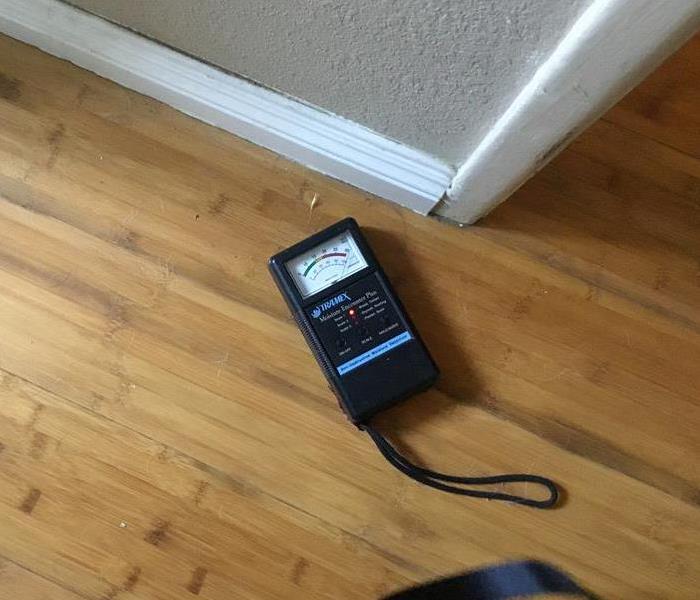Moisture Levels Affect Water Recovery In Your Home
6/18/2021 (Permalink)
Whenever excessive moisture gets inside a home or commercial building, the problems it causes are broken down into two categories. When water leaks from a pipe or an appliance, it can contact contents and building materials. Anything that happens due to direct contact with liquid water, such as the carpet's delamination, is considered primary damage. Once water gets inside a structure, it naturally raises humidity levels indoors when moisture from wet materials evaporates into the air. Elevated humidity levels can also cause building materials issues as water transfers from the air to not wet materials to reach equilibrium. When water vapor is the primary cause of the structural problems, they get classified as secondary damage.
Extraction procedures help reduce primary issues, and structural drying helps mitigate both types of problems. When our SERVPRO technicians deal with any water damage situation near Hacienda Heights/Rowland Heights area, we monitor relative and specific humidity. Controlling humidity levels in a structure help speed up structural drying times. Wet materials dry out faster if the humidity inside a building is kept as low as possible using air movers and "dehus" dehumidifiers. Monitoring and strategic placement of these devices optimize drying times. When we keep humidity levels low, we also reduce water vapor in the air, causing fewer secondary issues.
The temperature has such a significant effect on relative humidity; it's not always a good gauge of how much water exists in the air. Specific humidity is the actual amount of moisture in the air. When our SERVPRO techs measure specific humidity, they count the actual grains of moisture in each pound of air. To find specific humidity, we measure relative humidity levels and the room's temperature. We then put these numbers in a psychrometric chart that gives us the grains per pound number.




 24/7 Emergency Service
24/7 Emergency Service